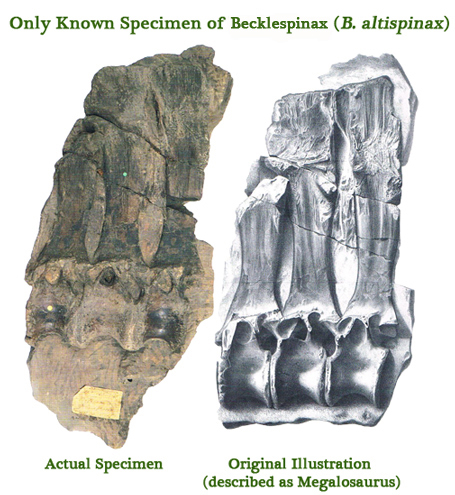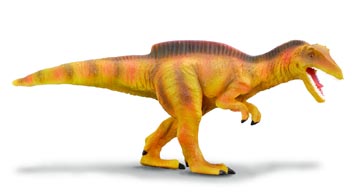Remembering the Remarkable Samuel Husbands Beckles (1814-1890)
Samuel H. Beckles and Iguanodonts plus Becklespinax
Whilst going over some notes in a rare office tidy up, we came across a handful of old genealogy papers relating to research on Samuel Husbands Beckles. Who, you might ask? One thing that is for certain, names such as Gideon Mantell, Sir Richard Owen and Mary Anning may be quite well known, but few people outside the Earth sciences (and perhaps one or two in the disciplines we group together as the Earth sciences), may not be familiar with the name.
Samuel Husbands Beckles
Samuel Husbands Beckles was born in 1814 (April 12th we think), on the island of Barbados. He came from a wealthy and well-to-do family and he found great success as a lawyer. Samuel Beckles had always been keen on studying the natural world and science, although he lacked any real, formal scientific training.
Unlike people in the UK today, who might dream of early retirement in the Caribbean, Samuel decided at the grand old age of 31 to give up the vast majority of his legal work and retire in England. As a rich, and well connected member of Georgian/Victorian high society, he did much to fund and popularise the study of the geology and fossils found in southern England (he lived at St Leonards-on-Sea, E. Sussex).
Collecting and Studying Fossils
He dedicated much of the rest of his life to collecting fossils and learning about the geology of the Weald. He is credited with the discovery of three, articulated, tall-spined dorsal vertebrae (back bones), no vertebrae fossils had ever been found that looked like these, indeed the exact location of the find remains uncertain. We do know that these fossils were found at a site close to the small town of Battle, in East Sussex, it is probable that these fossils came from a cutting or quarry that represented strata that make ups the Hastings Subgroup of the Weald basin. This would suggest that the fossils came from a dinosaur that lived during the Early Cretaceous.
The Fossil Material and Original Drawing (Becklespinax)
Picture credit: Everything Dinosaur
Becklespinax altispinax
These fossils were identified as belonging to some sort of large, carnivorous dinosaur (Theropoda). Following a review of the known fossil material in 1988, the genus Becklespinax was erected (Gregory S. Paul), the species name being Becklespinax altispinax. The genus name honours the work of Samuel Husbands Beckles (the name translates as Beckles’ tall spines).
The contribution he made to palaeontology and geology was recognised in his own lifetime, when against the custom of the day, he was elected a fellow of the Royal Society of London. Although he had accumulated a vast amount of fossil material and been actively involved in cataloguing and analysing a substantial amount of vertebrate fossil material, his close friendship with the highly influential Richard Owen may have contributed to his appointment.
An Illustration of the Humped-Back Dinosaur (Becklespinax altispinax)
Picture credit: Everything Dinosaur
The design team at CollectA have introduced several dinosaur models based on British fossil finds including a Becklespinas replica: CollectA Prehistoric Animal Models.
Samuel H. Beckles
Samuel H. Beckles collected a large number of fossil specimens from the Weald of Sussex which at the time were described as belonging to the Iguanodon genus. Iguanodon was rapidly becoming a bit of a “catch-all” when it came to large dinosaur bones with affinities to the material described by Gideon Mantell. The Iguanodon genus was completely revised following a study in 2000 which reviewed the British “Iguanodon” material, including a lot of the fossils originally collected by Beckles and now the property of the Natural History Museum (London).
Although more closely associated with the study of dinosaur remains found in southern England, Samuel Beckles played a significant role in helping to interpret the geology and fossil material found on the Isle of Wight. In 1854, he described a series of three-toed prints, the first to be described from the Isle of Wight (Compton Bay).
A Formal Description
In February 1862, he published a formal review of the dinosaur footprints that he had found in the quarterly journal of the Geological Society. The paper had the snappy title – “On some Natural Casts of Reptilian Footprints in the Wealden Beds of the Isle of Wight and of Swanage”.
So today, in recognition of the 200th anniversary of the birth of Samuel Husbands Beckles we take time out to recognise his contribution to geology and palaeontology.
For further information on fossils of dinosaurs from the British Isles check out “Dinosaurs of the British Isles” by Dean R. Lomax and Nobumichi Tamura which is available from Siri Scientific Press: Siri Scientific Press.



